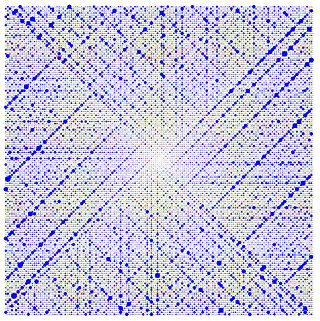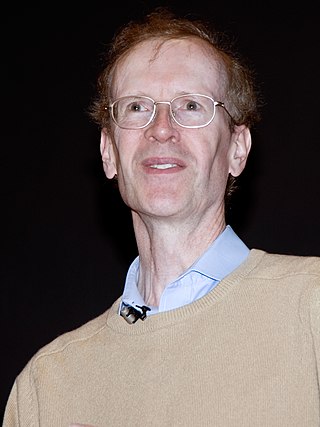Diophantus of Alexandria was a Greek mathematician, who was the author of two main works: On Polygonal Numbers, which survives incomplete, and the Arithmetica in thirteen books, most of it extant, made up of arithmetical problems that are solved through algebraic equations.
Mathematical logic is the study of formal logic within mathematics. Major subareas include model theory, proof theory, set theory, and recursion theory. Research in mathematical logic commonly addresses the mathematical properties of formal systems of logic such as their expressive or deductive power. However, it can also include uses of logic to characterize correct mathematical reasoning or to establish foundations of mathematics.

Number theory is a branch of pure mathematics devoted primarily to the study of the integers and arithmetic functions. German mathematician Carl Friedrich Gauss (1777–1855) said, "Mathematics is the queen of the sciences—and number theory is the queen of mathematics." Number theorists study prime numbers as well as the properties of mathematical objects constructed from integers, or defined as generalizations of the integers.

A prime number is a natural number greater than 1 that is not a product of two smaller natural numbers. A natural number greater than 1 that is not prime is called a composite number. For example, 5 is prime because the only ways of writing it as a product, 1 × 5 or 5 × 1, involve 5 itself. However, 4 is composite because it is a product (2 × 2) in which both numbers are smaller than 4. Primes are central in number theory because of the fundamental theorem of arithmetic: every natural number greater than 1 is either a prime itself or can be factorized as a product of primes that is unique up to their order.
In number theory, Fermat's little theorem states that if p is a prime number, then for any integer a, the number ap − a is an integer multiple of p. In the notation of modular arithmetic, this is expressed as
Foundations of mathematics is the logical and mathematical framework that allows the development of mathematics without generating self-contradictory theories, and, in particular, to have reliable concepts of theorems, proofs, algorithms, etc. This may also include the philosophical study of the relation of this framework with reality.

Claude Gaspar Bachet Sieur de Méziriac was a French mathematician and poet born in Bourg-en-Bresse, at that time belonging to Duchy of Savoy. He wrote Problèmes plaisans et délectables qui se font par les nombres, Les éléments arithmétiques, and a Latin translation of the Arithmetica of Diophantus. He also discovered means of solving indeterminate equations using continued fractions, a method of constructing magic squares, and a proof of Bézout's identity.

Ian Nicholas Stewart is a British mathematician and a popular-science and science-fiction writer. He is Emeritus Professor of Mathematics at the University of Warwick, England.

Simon Lehna Singh, is a British popular science author, theoretical and particle physicist. His written works include Fermat's Last Theorem, The Code Book, Big Bang, Trick or Treatment? Alternative Medicine on Trial and The Simpsons and Their Mathematical Secrets. In 2012 Singh founded the Good Thinking Society, through which he created the website "Parallel" to help students learn mathematics.
In mathematics, an impossibility theorem is a theorem that demonstrates a problem or general set of problems cannot be solved. These are also known as proofs of impossibility, negative proofs, or negative results. Impossibility theorems often resolve decades or centuries of work spent looking for a solution by proving there is no solution. Proving that something is impossible is usually much harder than the opposite task, as it is often necessary to develop a proof that works in general, rather than to just show a particular example. Impossibility theorems are usually expressible as negative existential propositions or universal propositions in logic.

Pierre de Fermat was a French mathematician who is given credit for early developments that led to infinitesimal calculus, including his technique of adequality. In particular, he is recognized for his discovery of an original method of finding the greatest and the smallest ordinates of curved lines, which is analogous to that of differential calculus, then unknown, and his research into number theory. He made notable contributions to analytic geometry, probability, and optics. He is best known for his Fermat's principle for light propagation and his Fermat's Last Theorem in number theory, which he described in a note at the margin of a copy of Diophantus' Arithmetica. He was also a lawyer at the Parlement of Toulouse, France.

In number theory, Fermat's Last Theorem states that no three positive integers a, b, and c satisfy the equation an + bn = cn for any integer value of n greater than 2. The cases n = 1 and n = 2 have been known since antiquity to have infinitely many solutions.
This is a timeline of pure and applied mathematics history. It is divided here into three stages, corresponding to stages in the development of mathematical notation: a "rhetorical" stage in which calculations are described purely by words, a "syncopated" stage in which quantities and common algebraic operations are beginning to be represented by symbolic abbreviations, and finally a "symbolic" stage, in which comprehensive notational systems for formulas are the norm.

Wiles's proof of Fermat's Last Theorem is a proof by British mathematician Sir Andrew Wiles of a special case of the modularity theorem for elliptic curves. Together with Ribet's theorem, it provides a proof for Fermat's Last Theorem. Both Fermat's Last Theorem and the modularity theorem were believed to be impossible to prove using previous knowledge by almost all living mathematicians at the time.
Mathematical Cranks is a book on pseudomathematics and the cranks who create it, written by Underwood Dudley. It was published by the Mathematical Association of America in their MAA Spectrum book series in 1992 (ISBN 0-88385-507-0).

Fermat's Last Theorem is a popular science book (1997) by Simon Singh. It tells the story of the search for a proof of Fermat's Last Theorem, first conjectured by Pierre de Fermat in 1637, and explores how many mathematicians such as Évariste Galois had tried and failed to provide a proof for the theorem. Despite the efforts of many mathematicians, the proof would remain incomplete until 1995, with the publication of Andrew Wiles' proof of the Theorem. The book is the first mathematics book to become a Number One seller in the United Kingdom, whilst Singh's documentary The Proof, on which the book was based, won a BAFTA in 1997.

The Banach–Tarski Paradox is a book in mathematics on the Banach–Tarski paradox, the fact that a unit ball can be partitioned into a finite number of subsets and reassembled to form two unit balls. It was written by Stan Wagon and published in 1985 by the Cambridge University Press as volume 24 of their Encyclopedia of Mathematics and its Applications book series. A second printing in 1986 added two pages as an addendum, and a 1993 paperback printing added a new preface. In 2016 the Cambridge University Press published a second edition, adding Grzegorz Tomkowicz as a co-author, as volume 163 of the same series. The Basic Library List Committee of the Mathematical Association of America has recommended its inclusion in undergraduate mathematics libraries.
Primality Testing for Beginners is an undergraduate-level mathematics book on primality tests, methods for testing whether a given number is a prime number, centered on the AKS primality test, the first method to solve this problem in polynomial time. It was written by Lasse Rempe-Gillen and Rebecca Waldecker, and originally published in German as Primzahltests für Einsteiger: Zahlentheorie, Algorithmik, Kryptographie. It was translated into English as Primality Testing for Beginners and published in 2014 by the American Mathematical Society, as volume 70 of their Student Mathematical Library book series. A second German-language edition was publisher by Springer in 2016.
From Zero to Infinity: What Makes Numbers Interesting is a book in popular mathematics and number theory by Constance Reid. It was originally published in 1955 by the Thomas Y. Crowell Company. The fourth edition was published in 1992 by the Mathematical Association of America in their MAA Spectrum series. A K Peters published a fifth "Fiftieth anniversary edition" in 2006.










